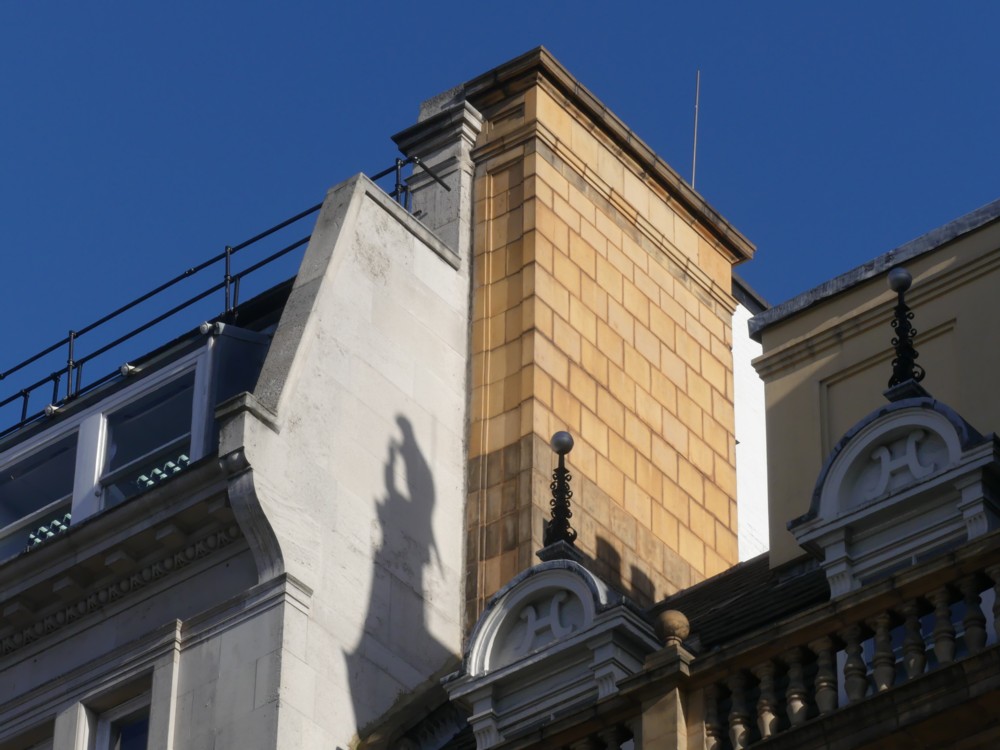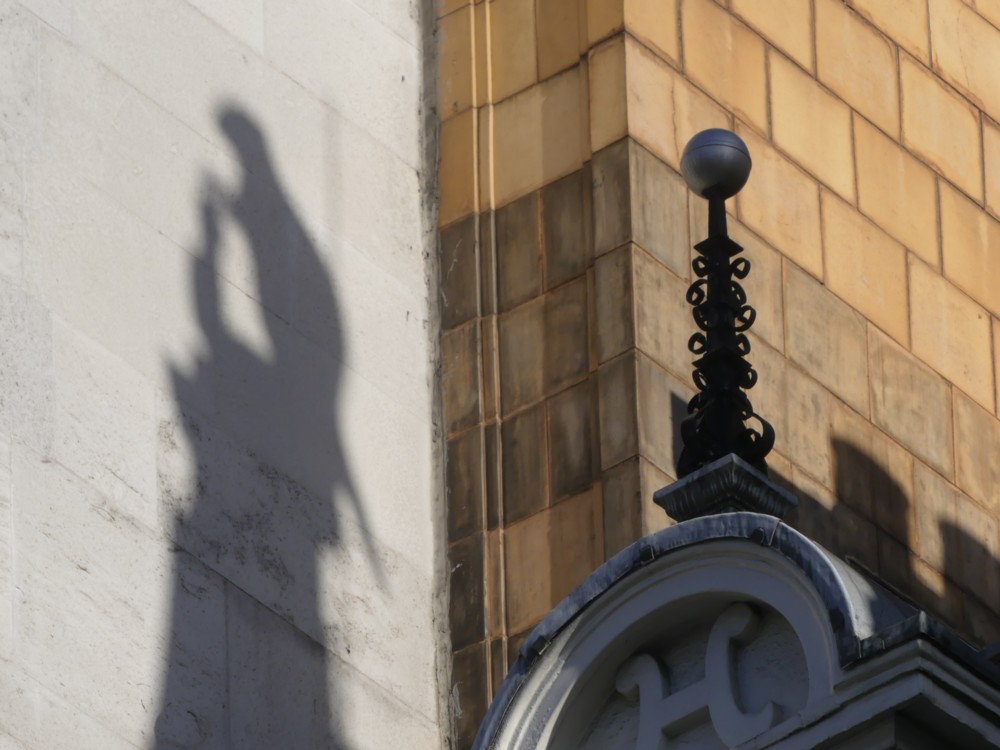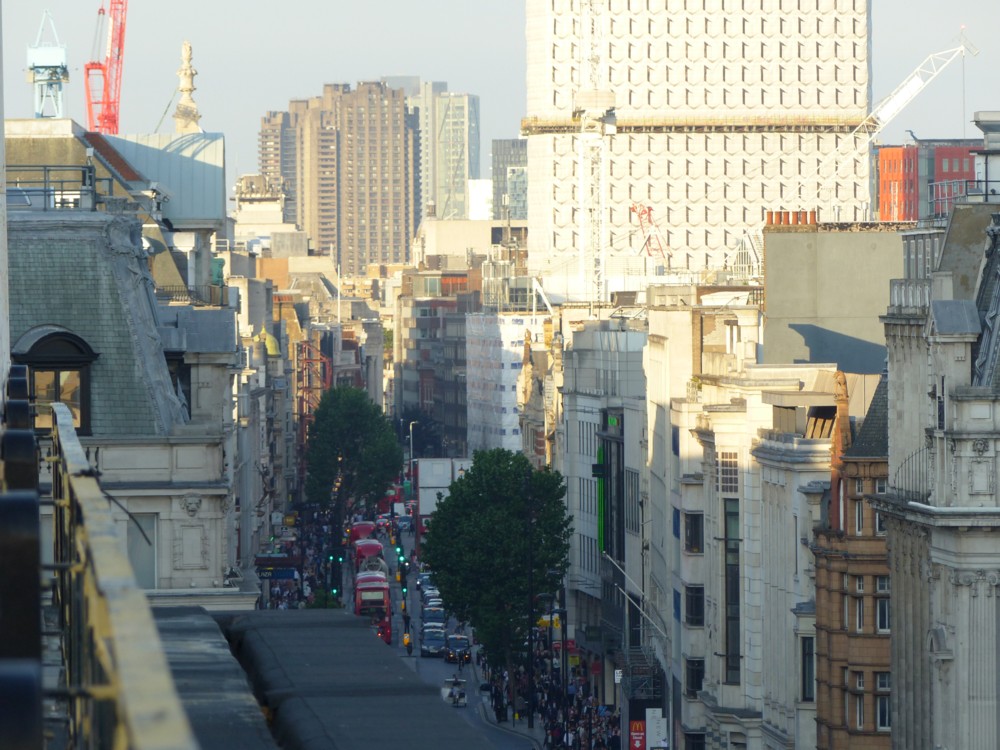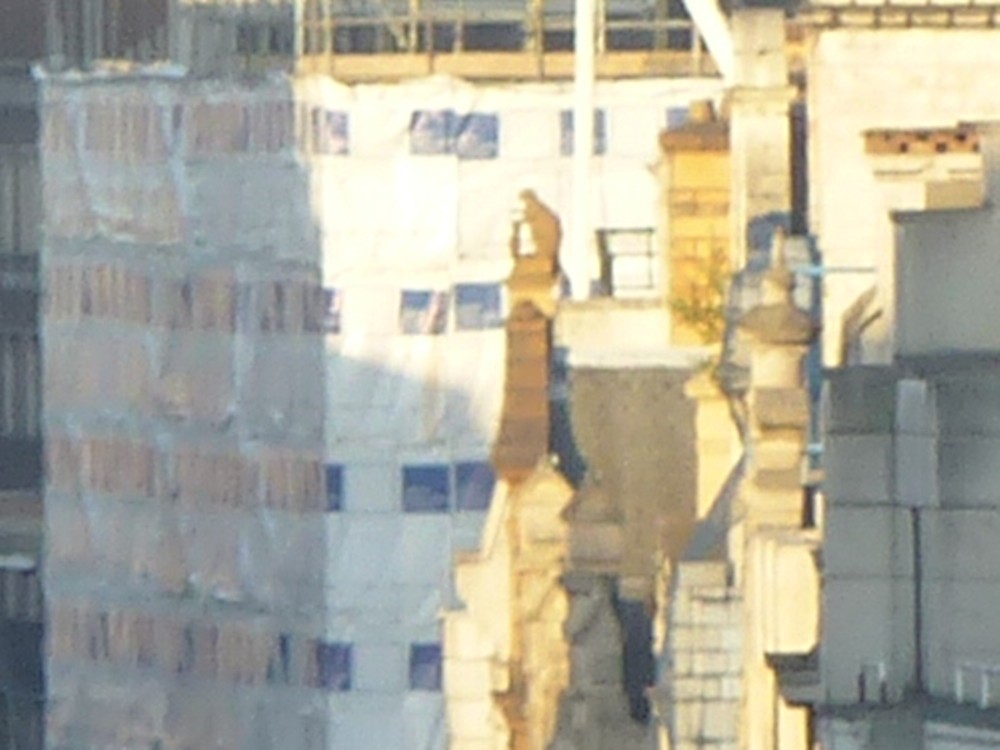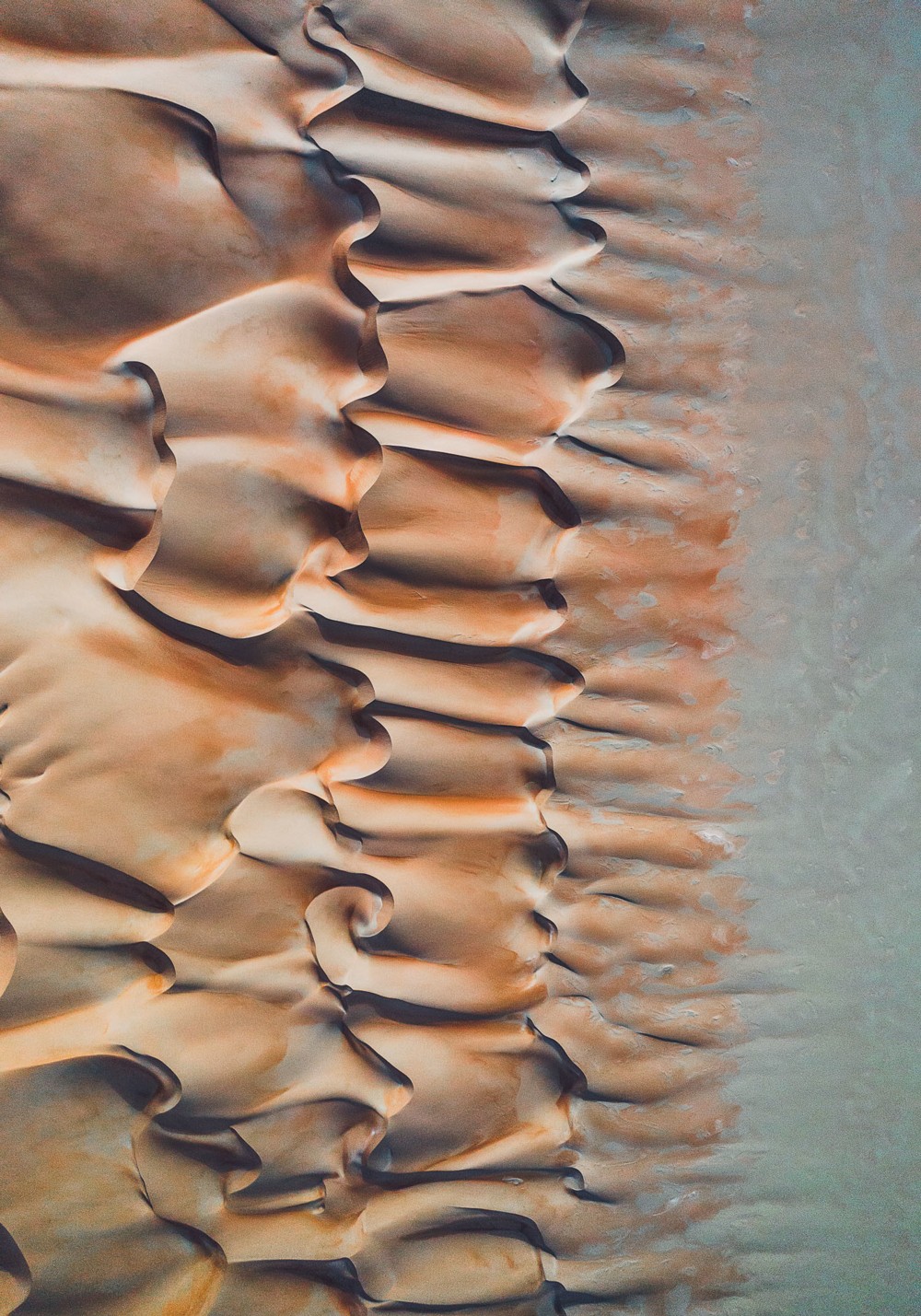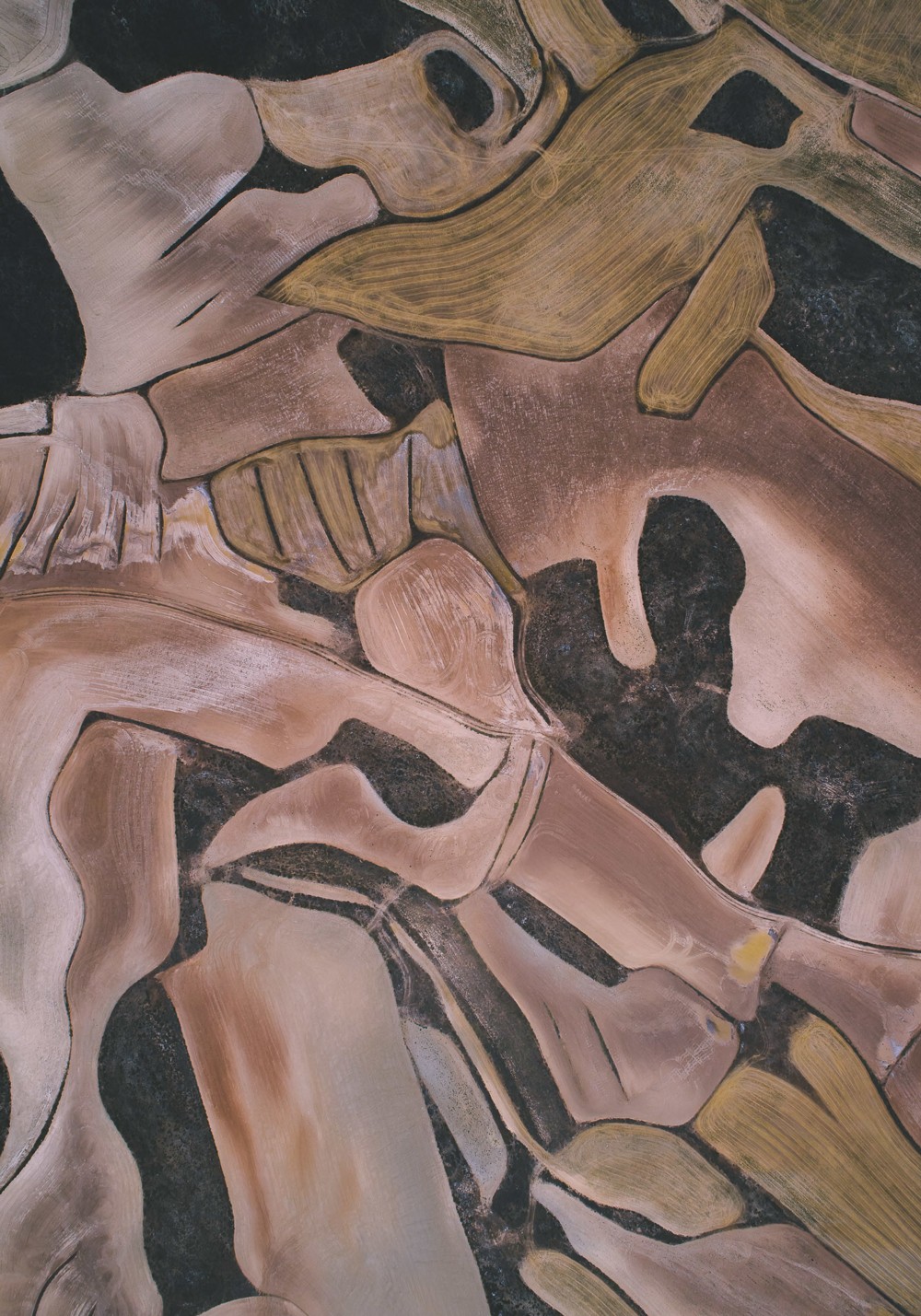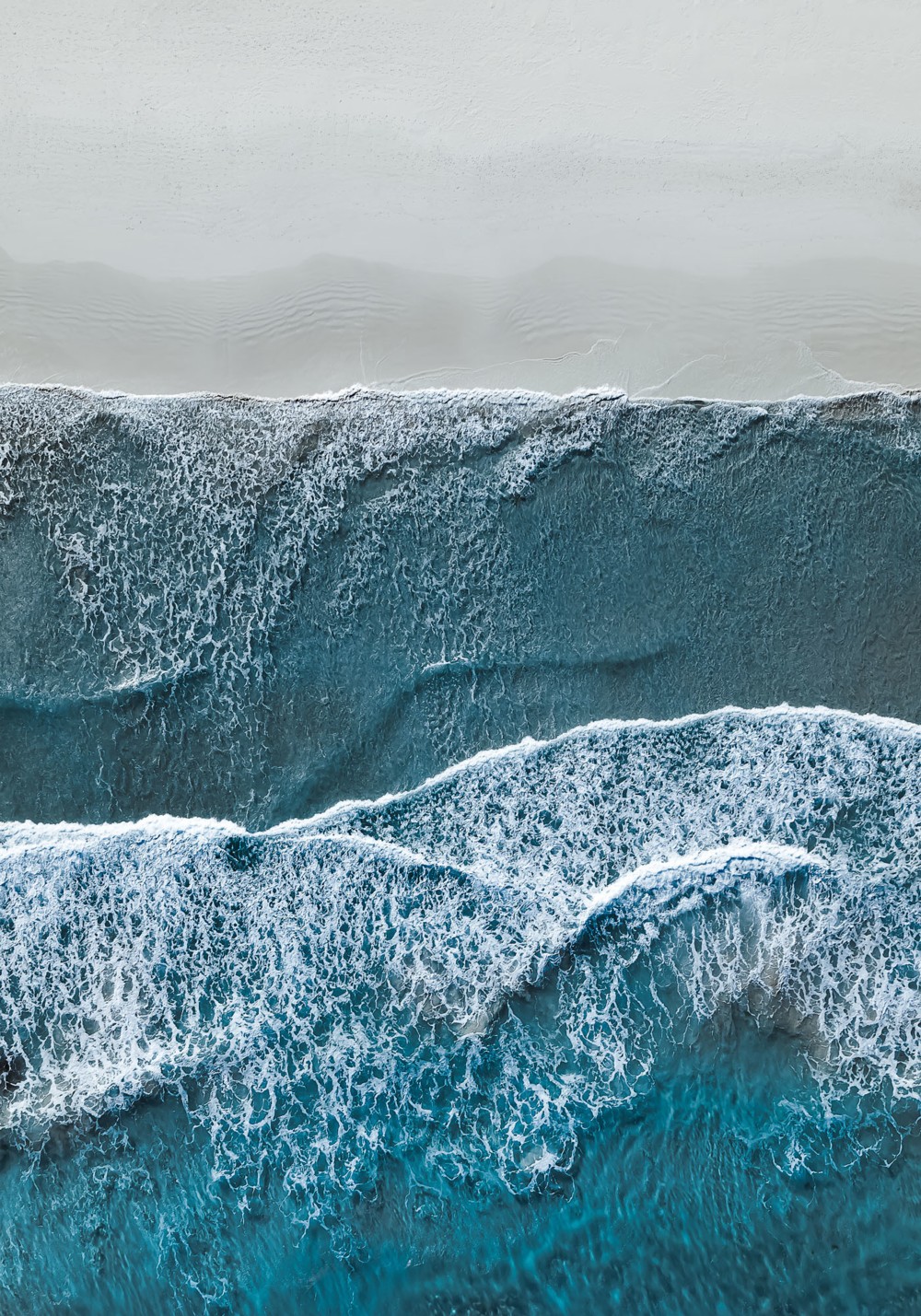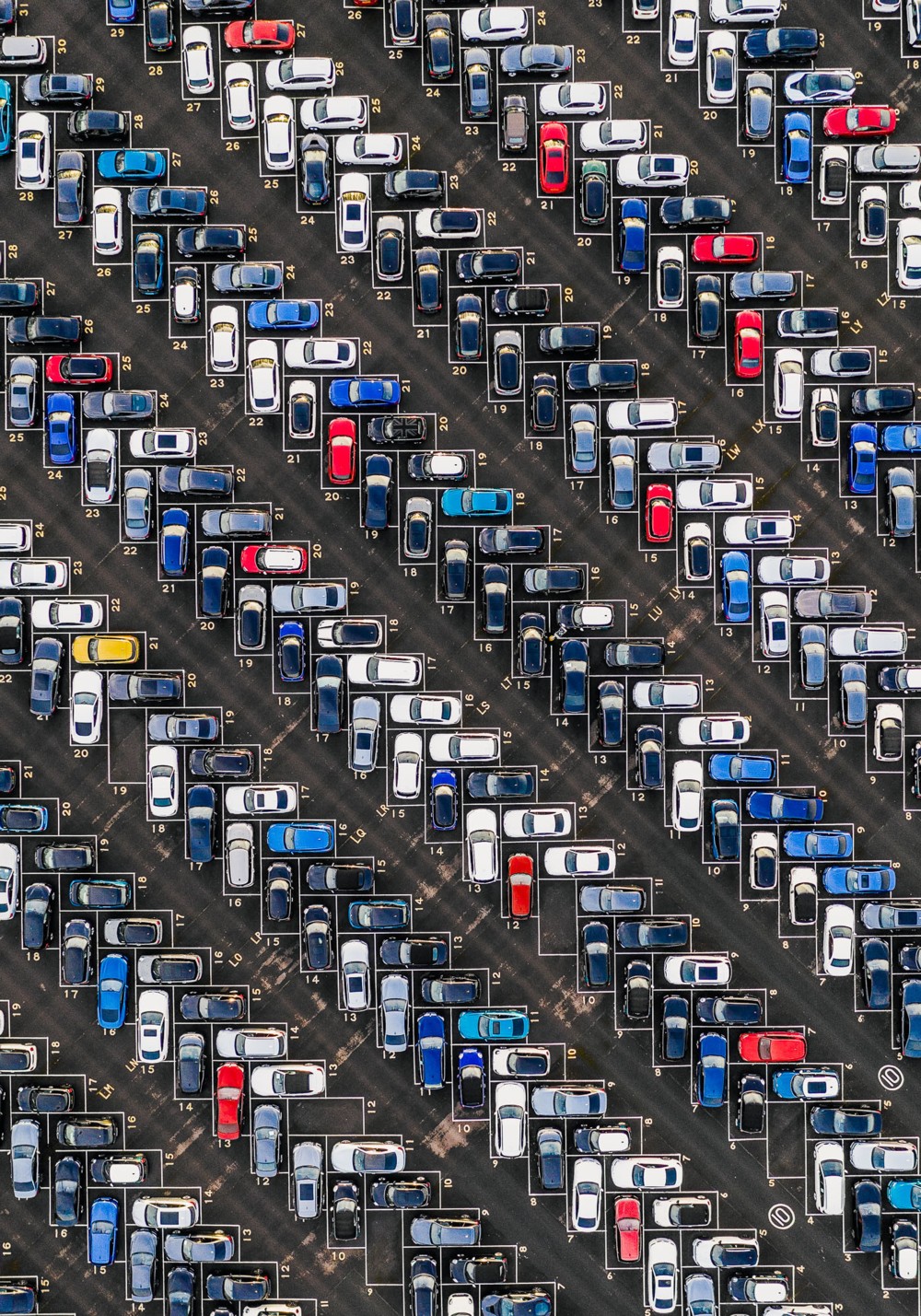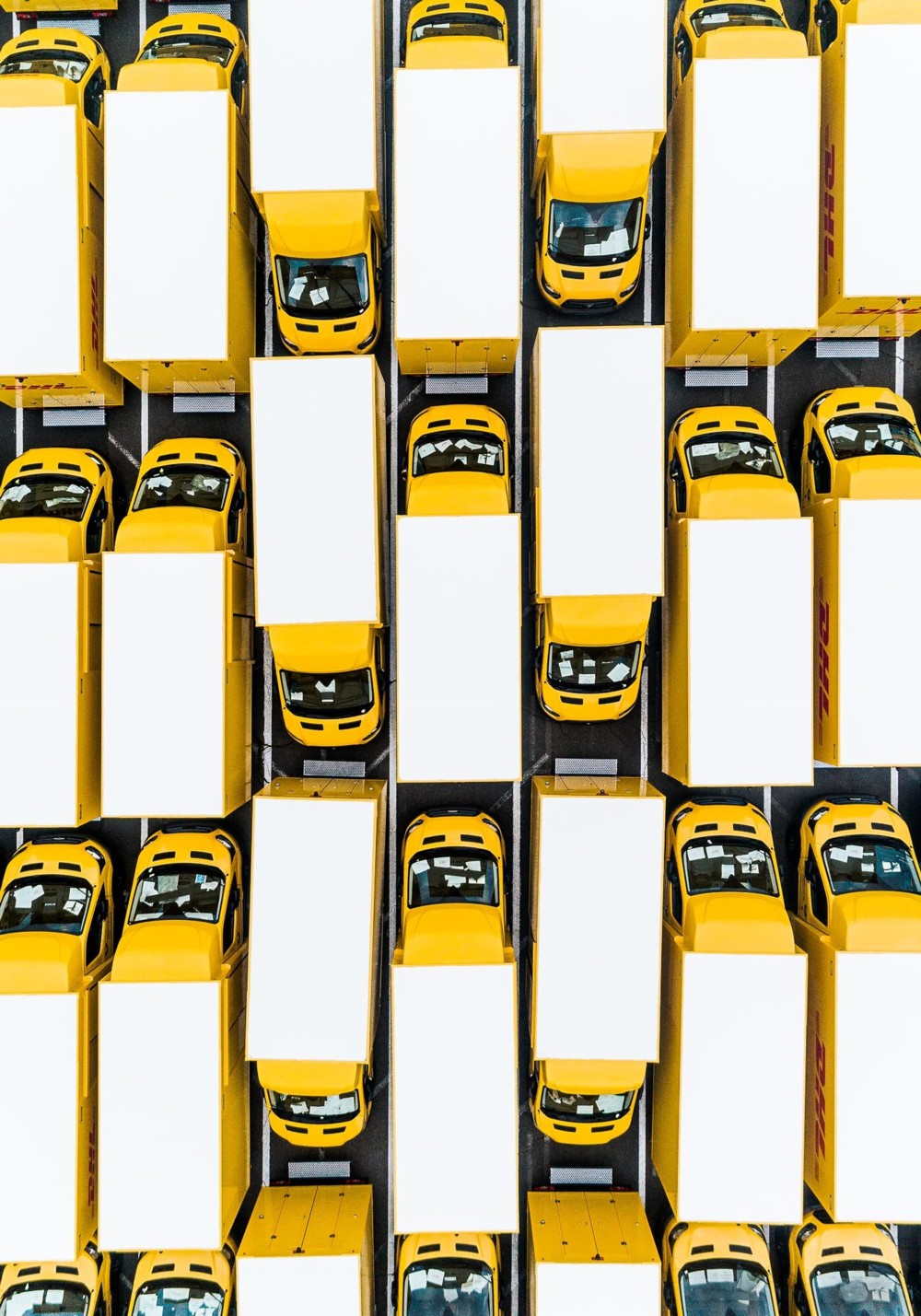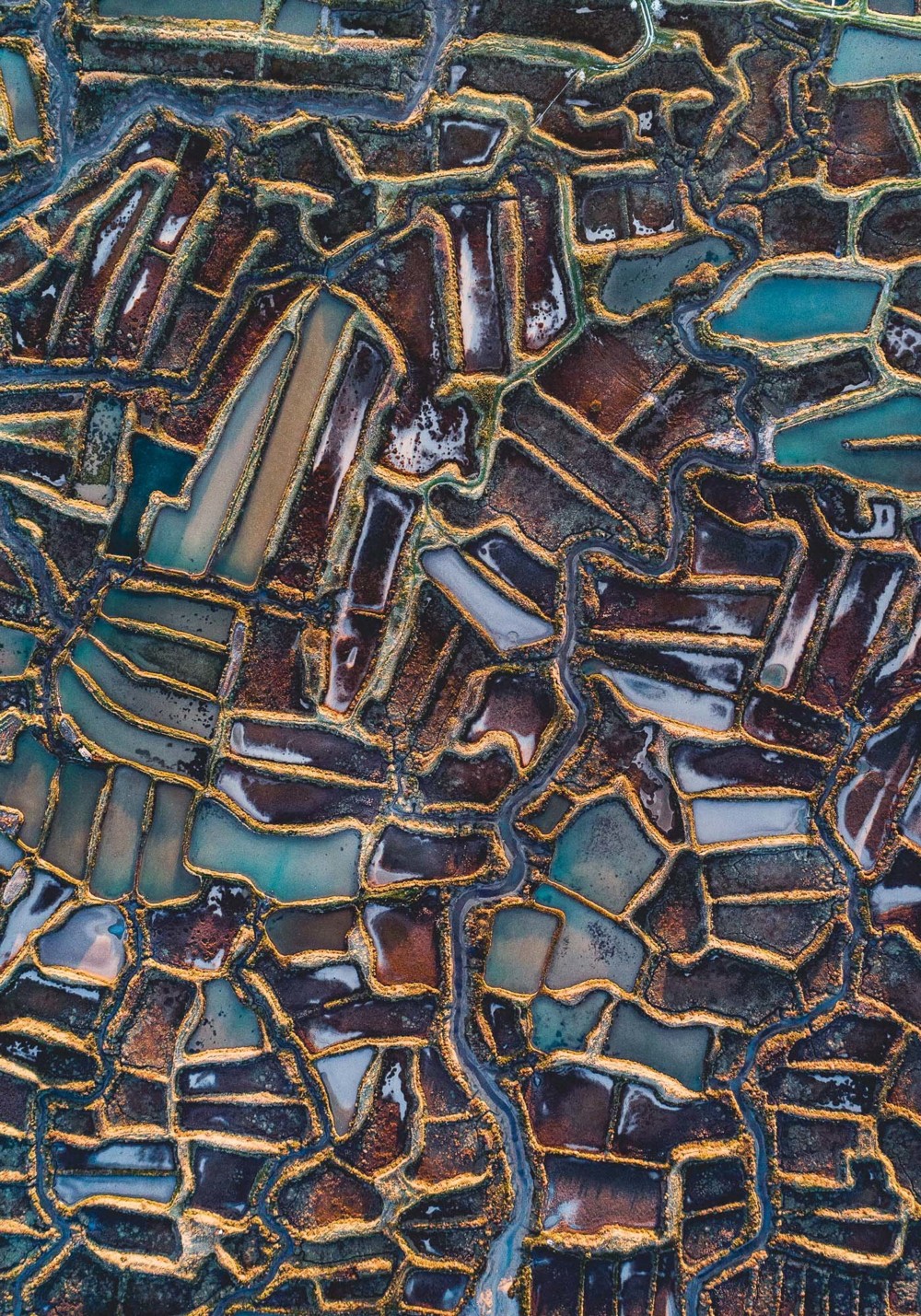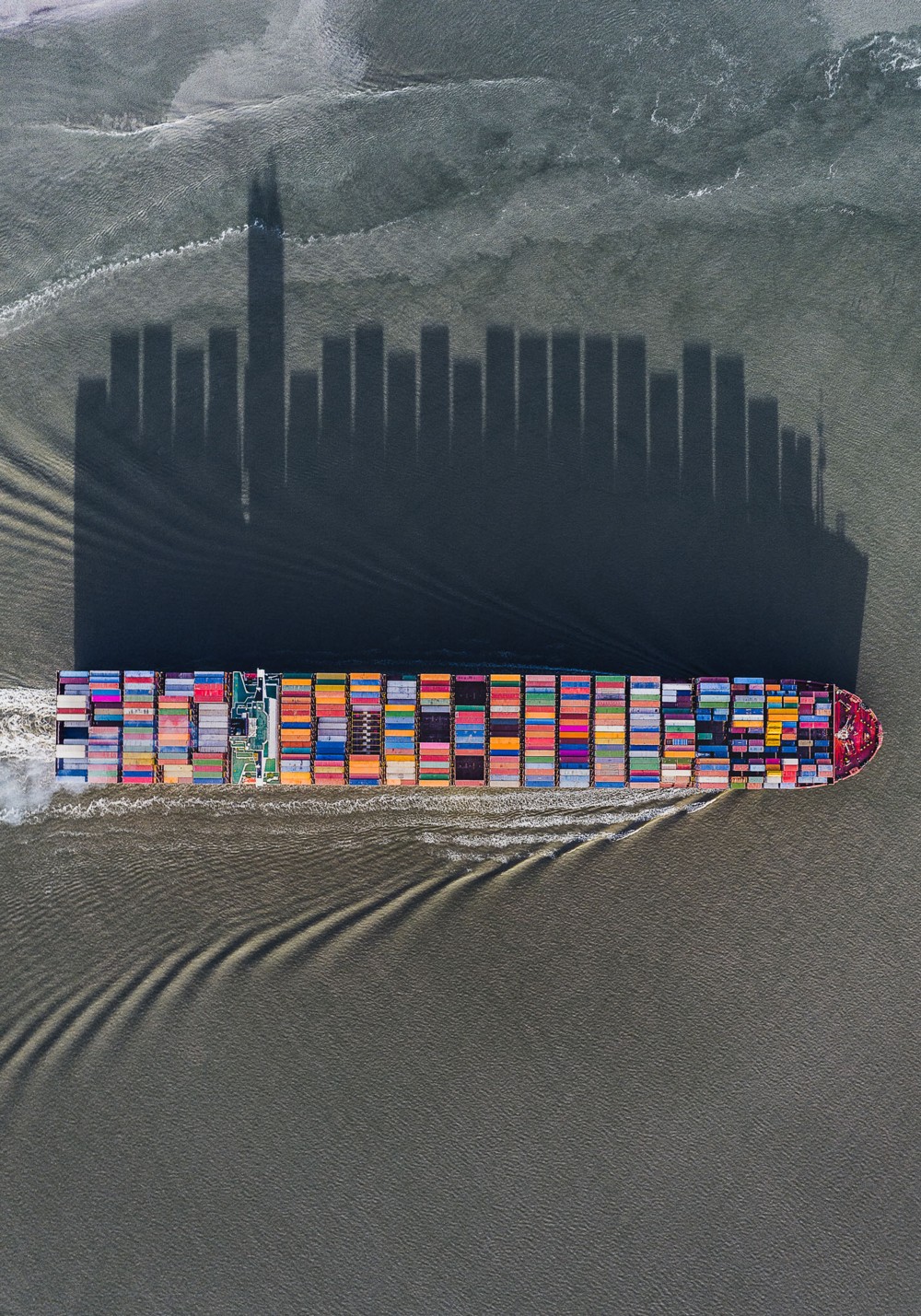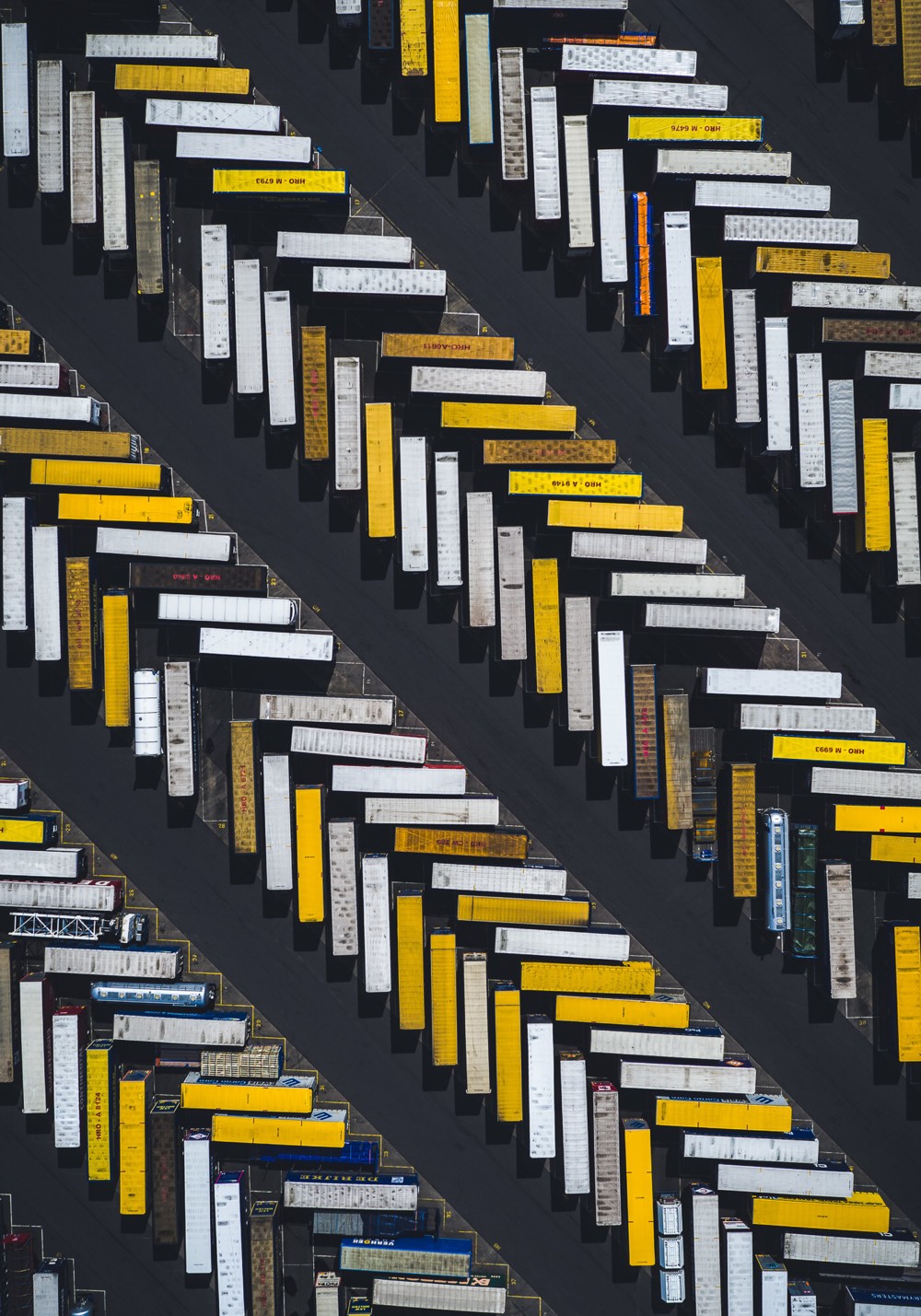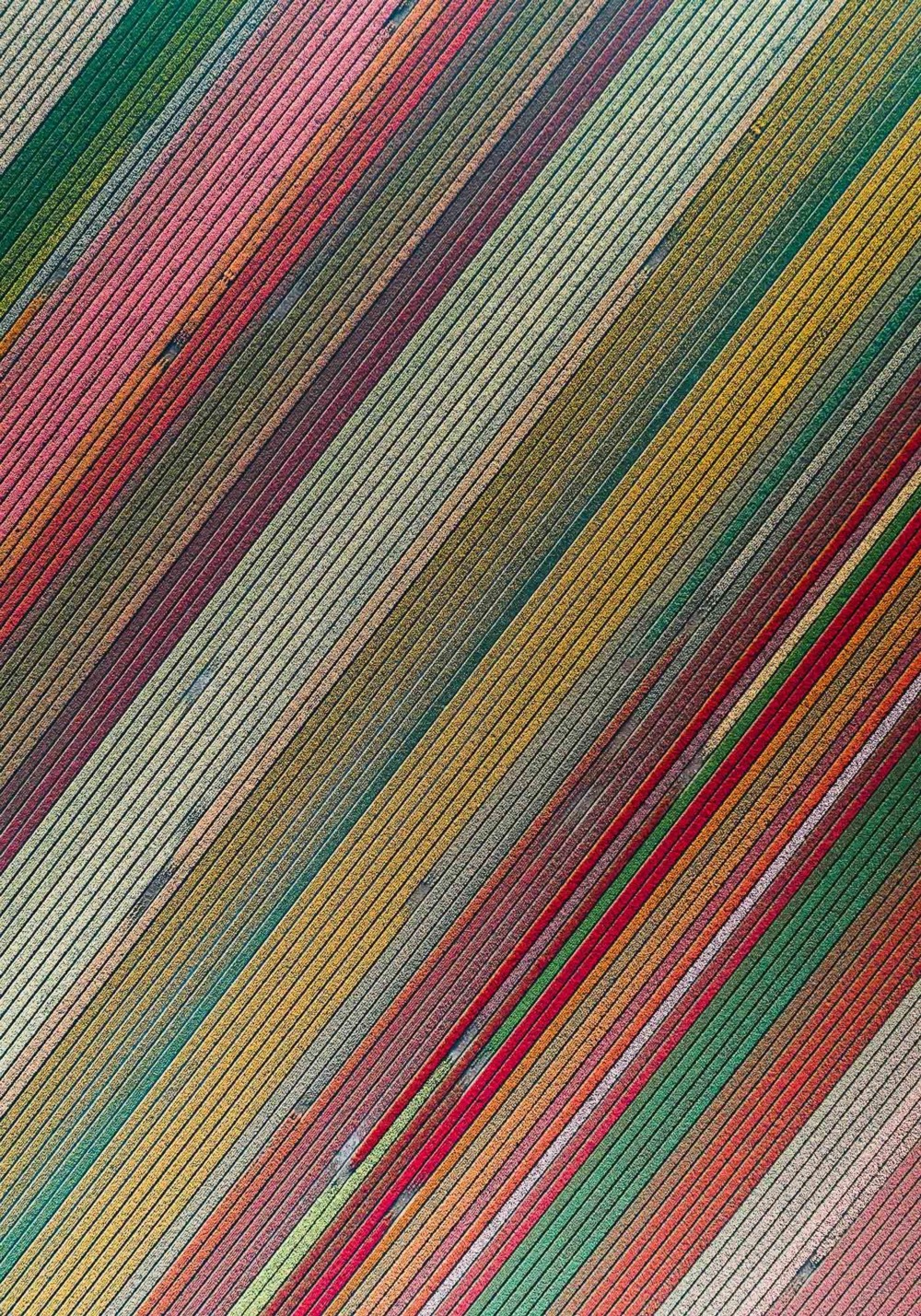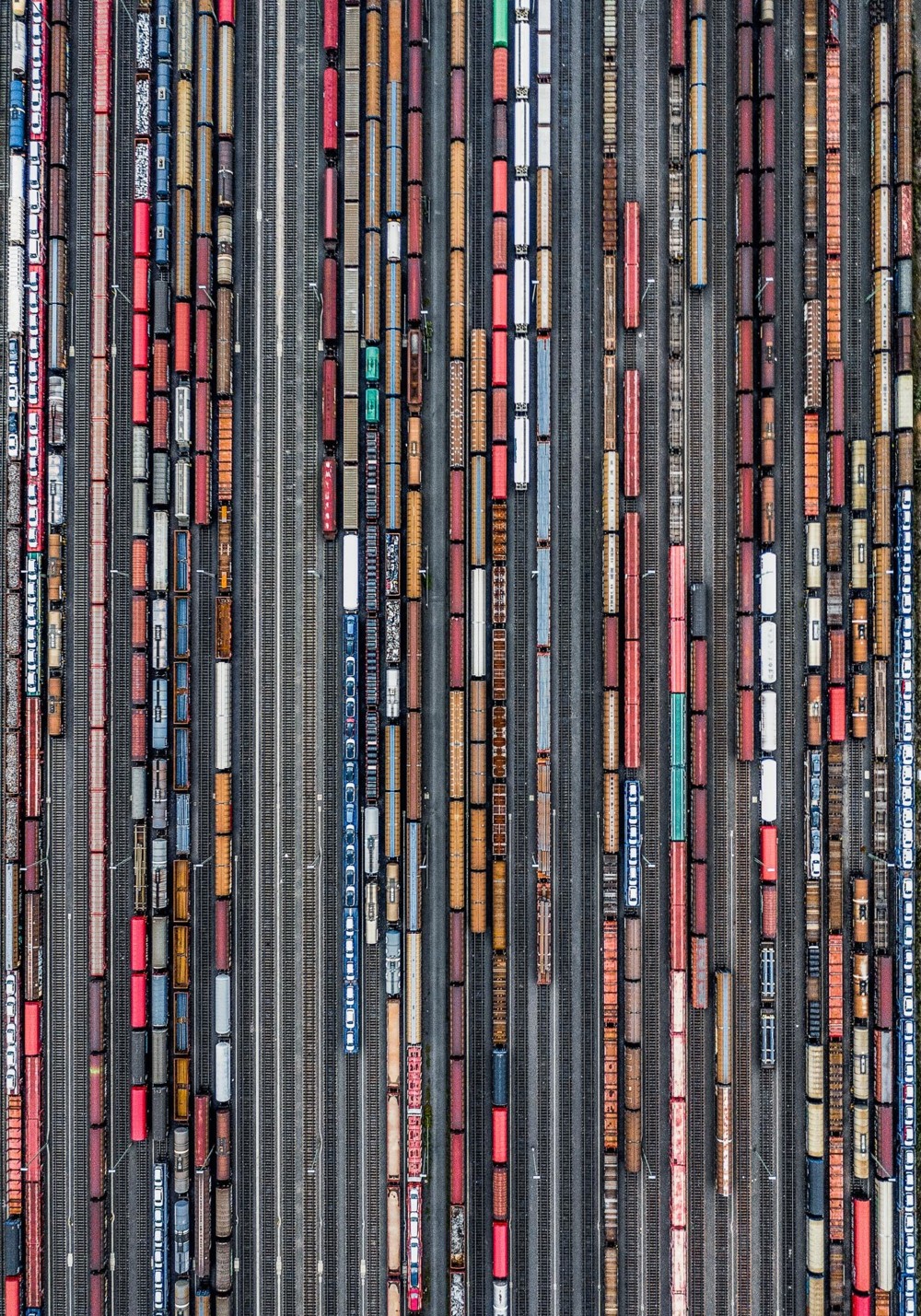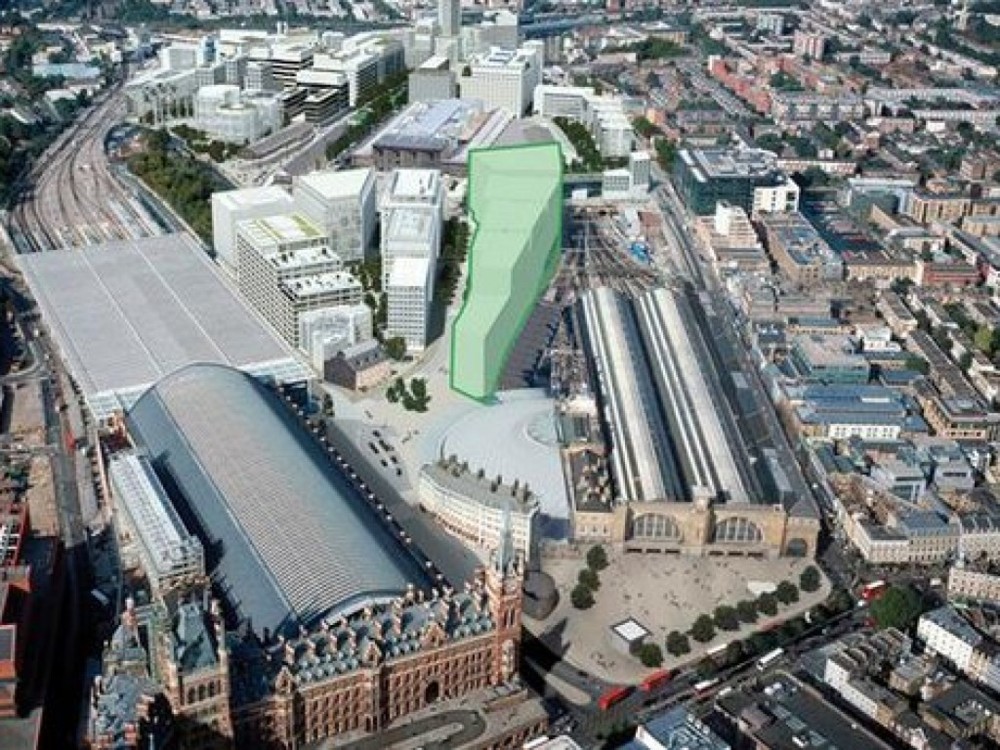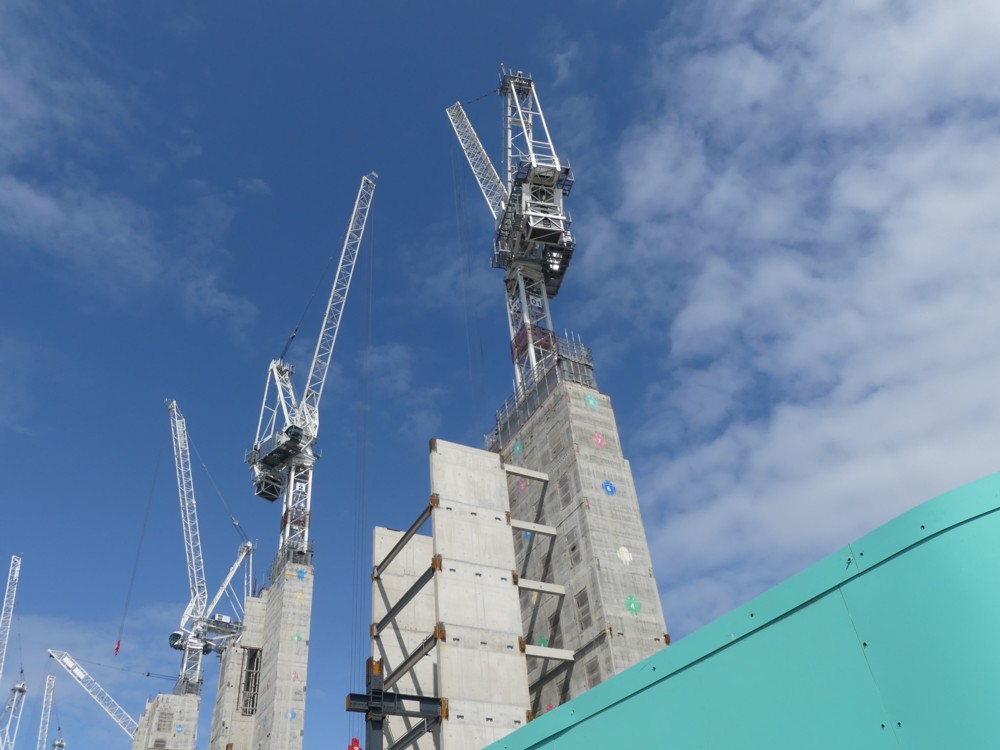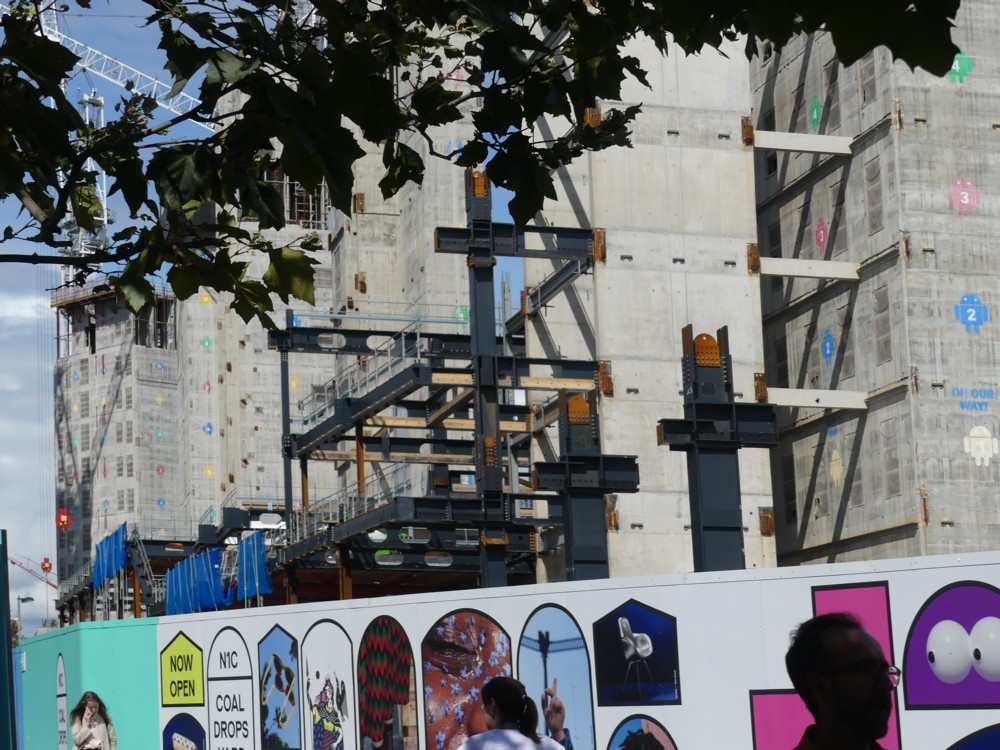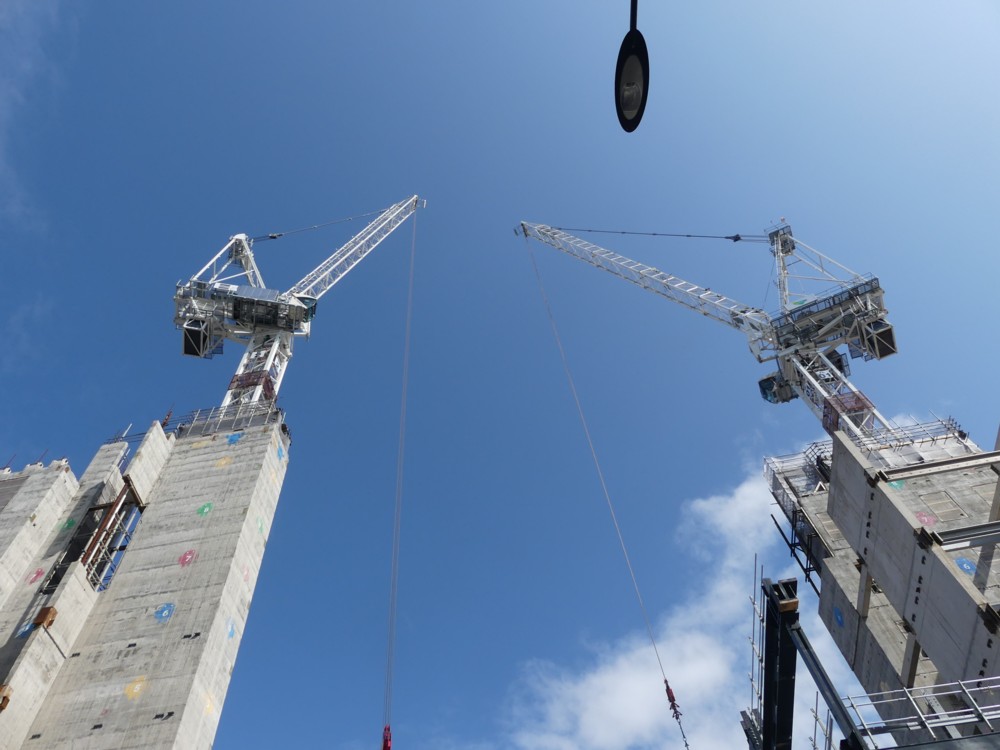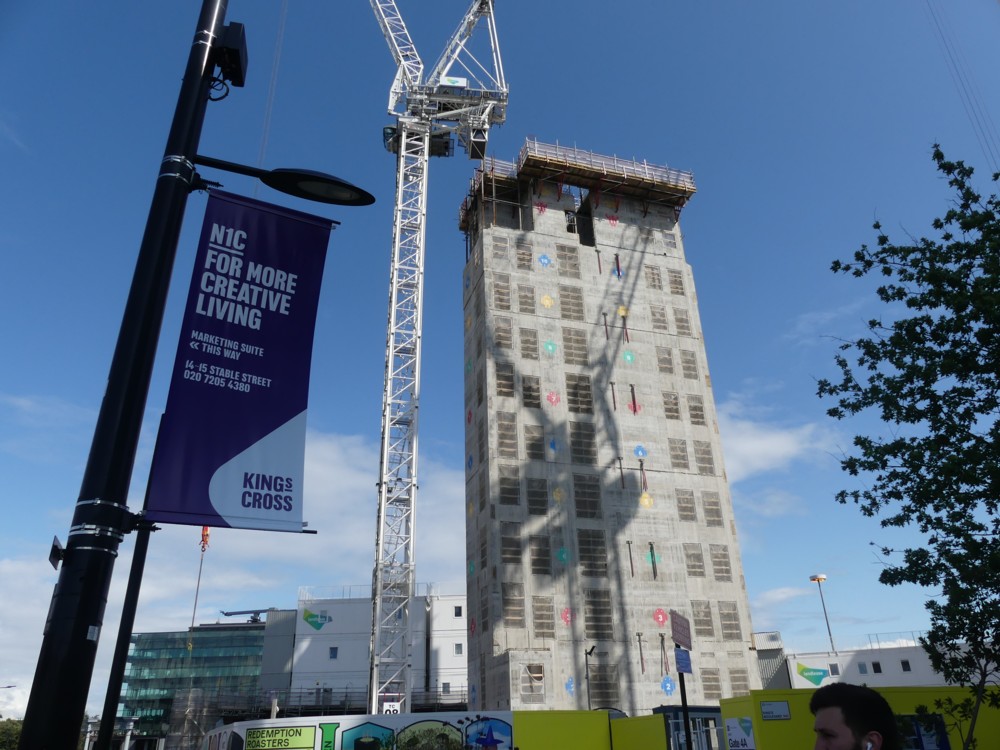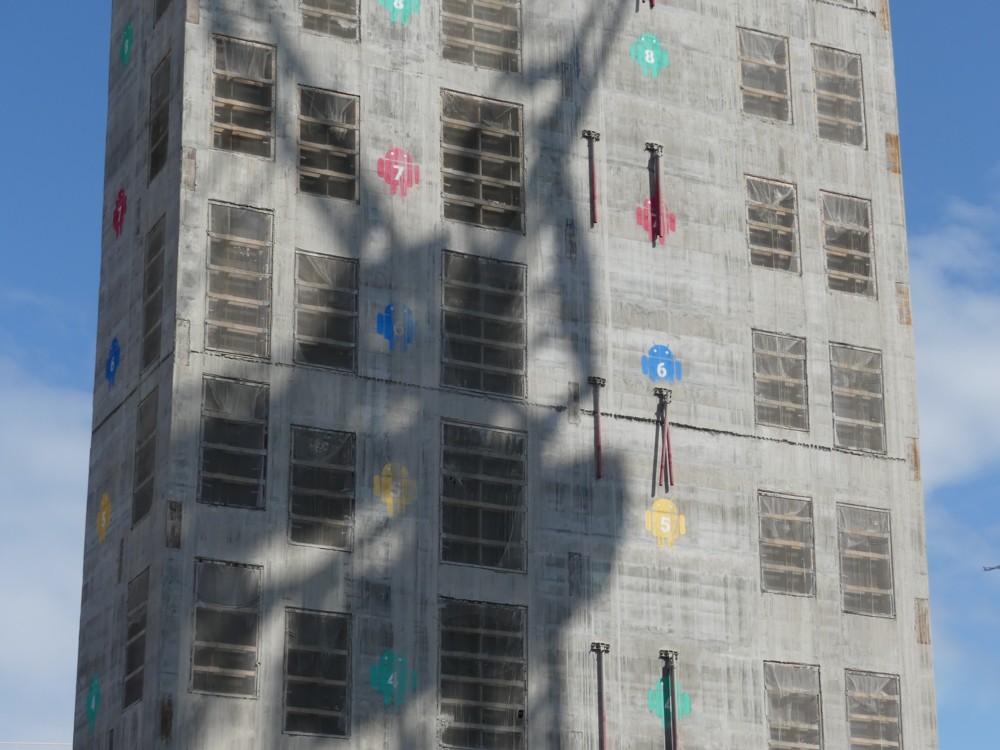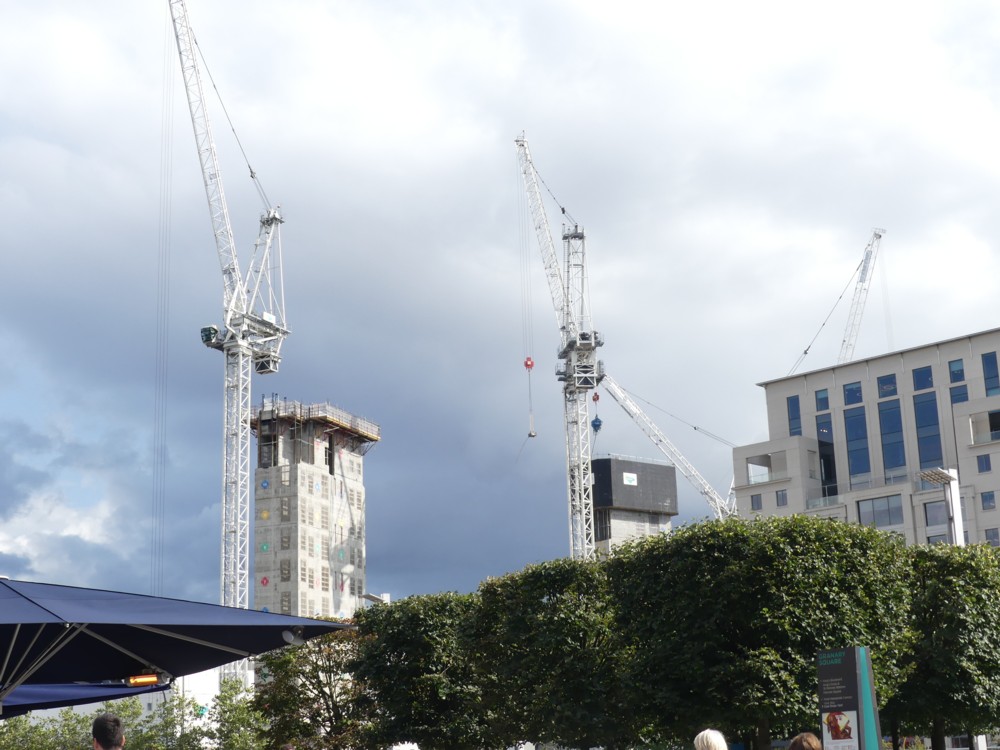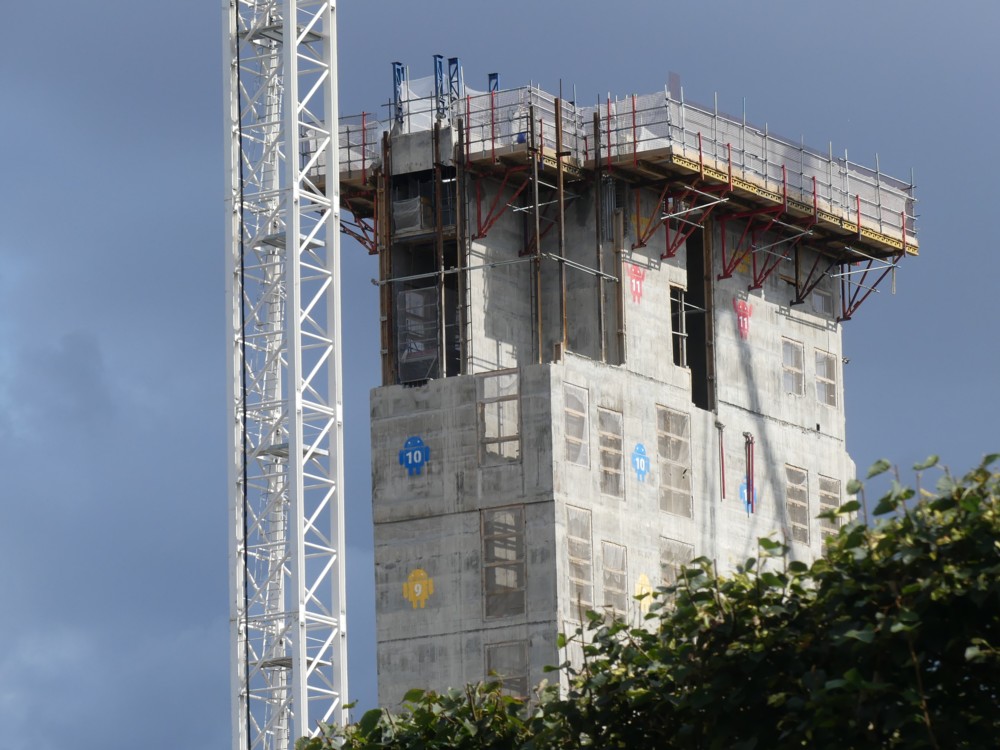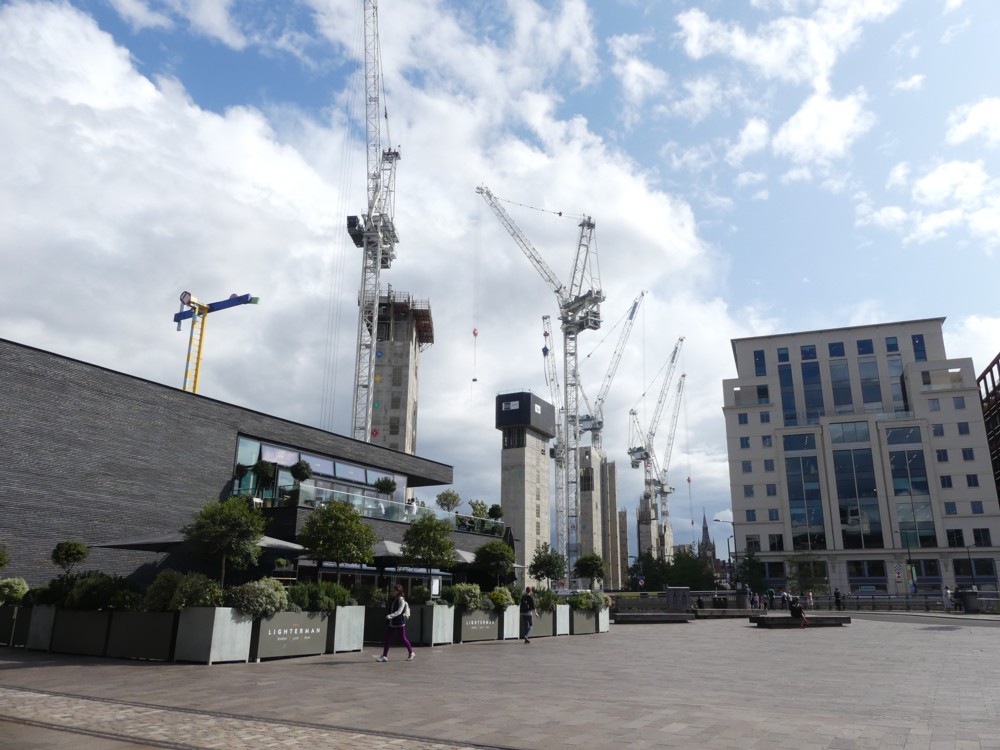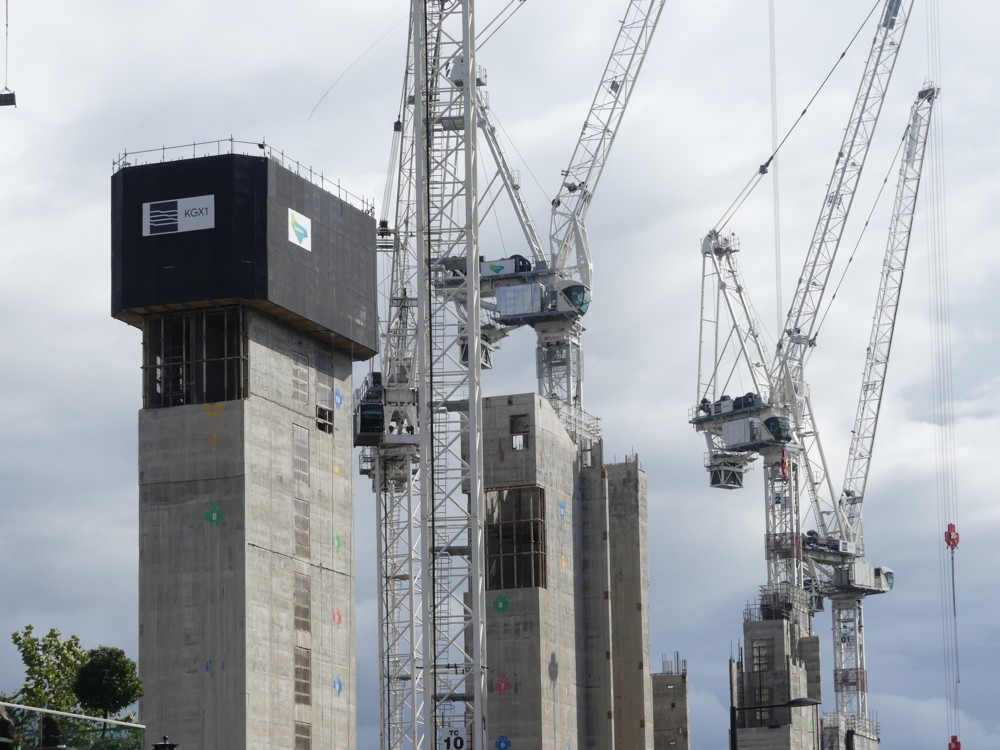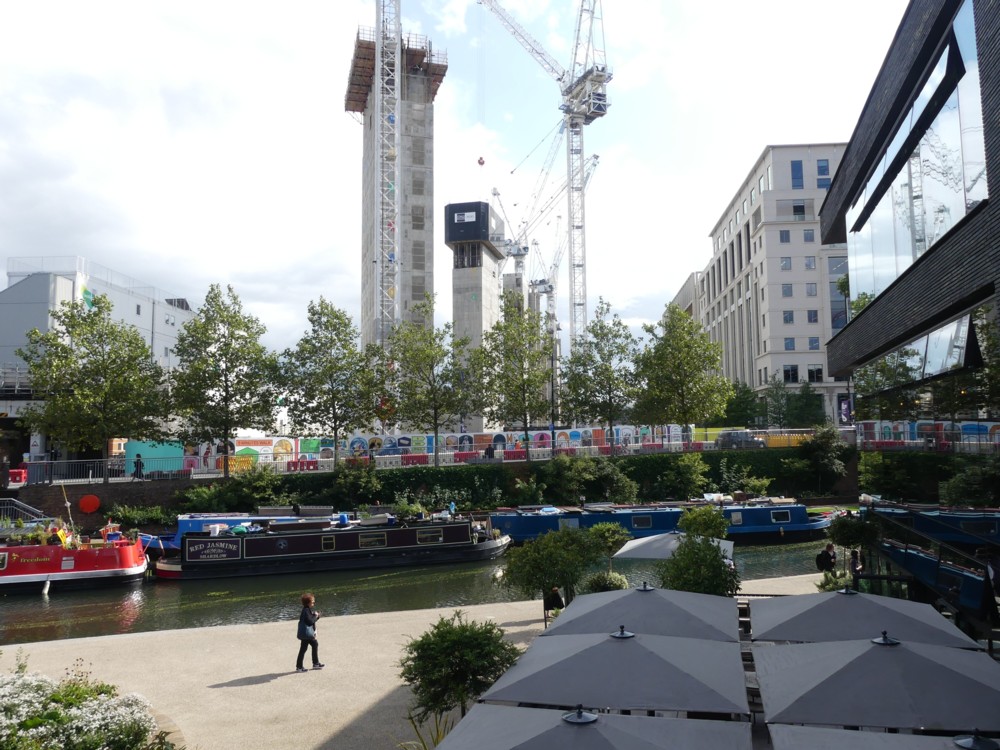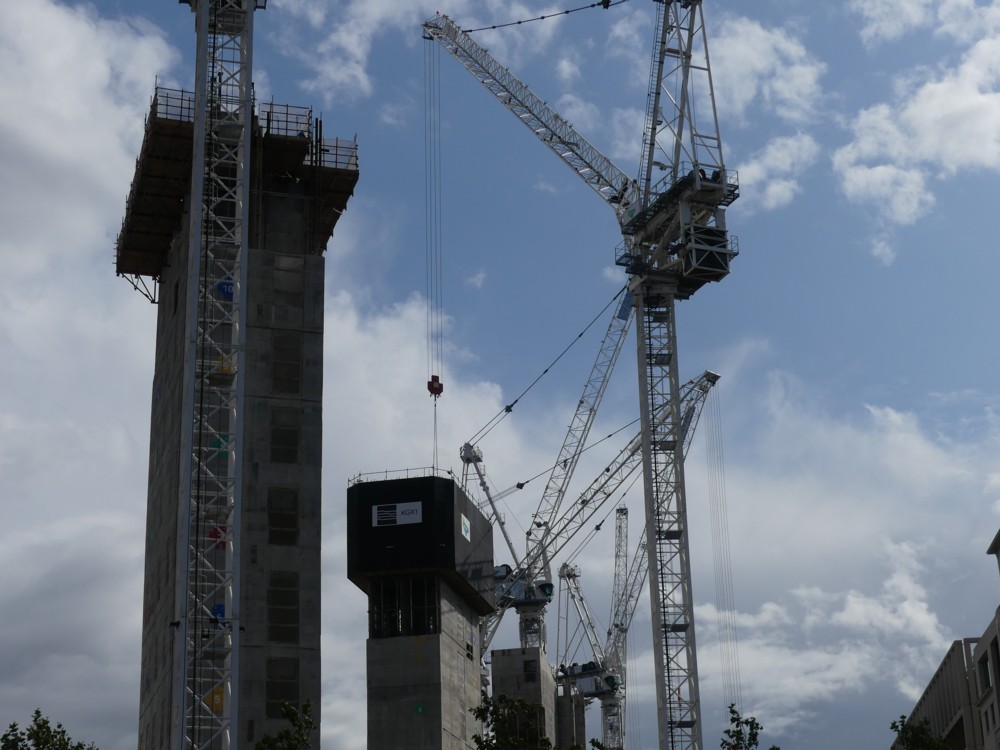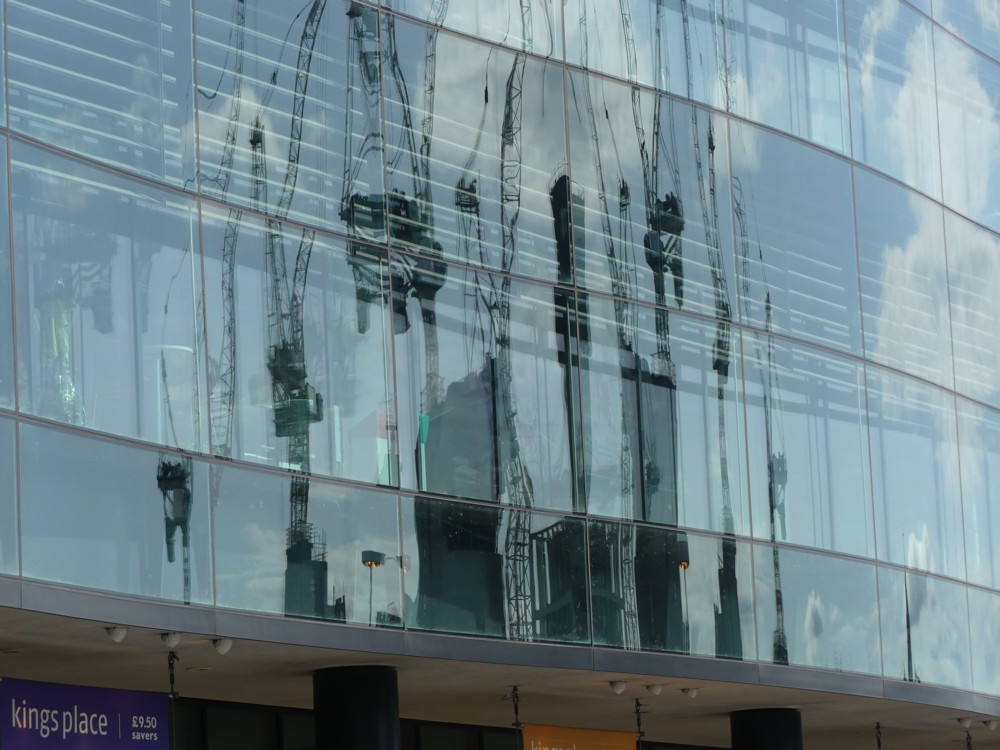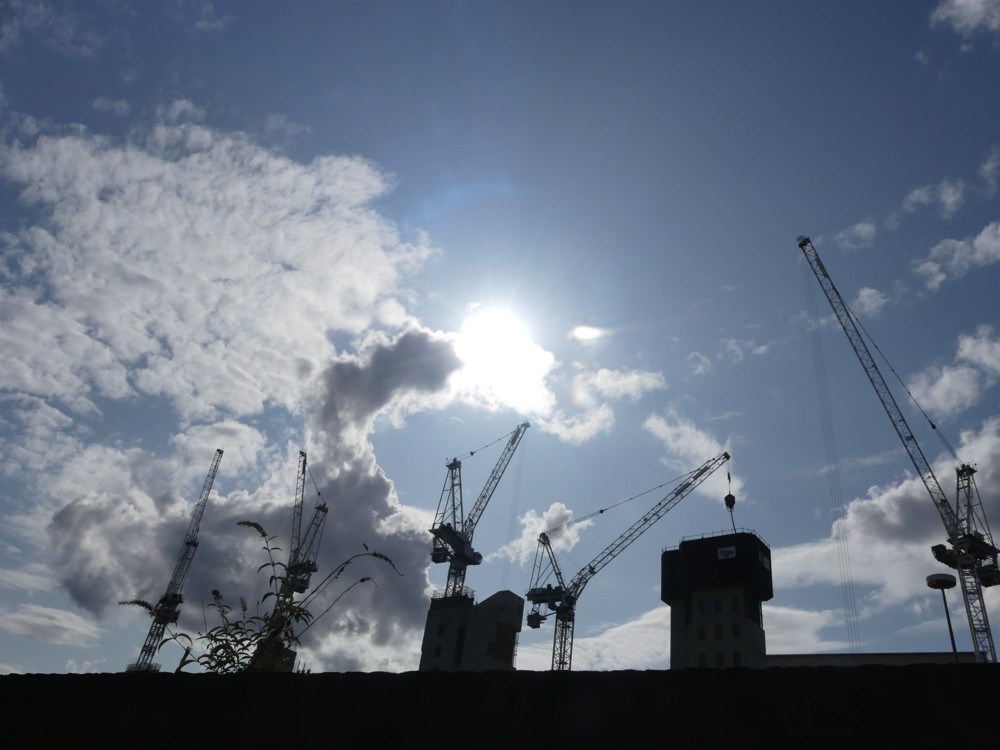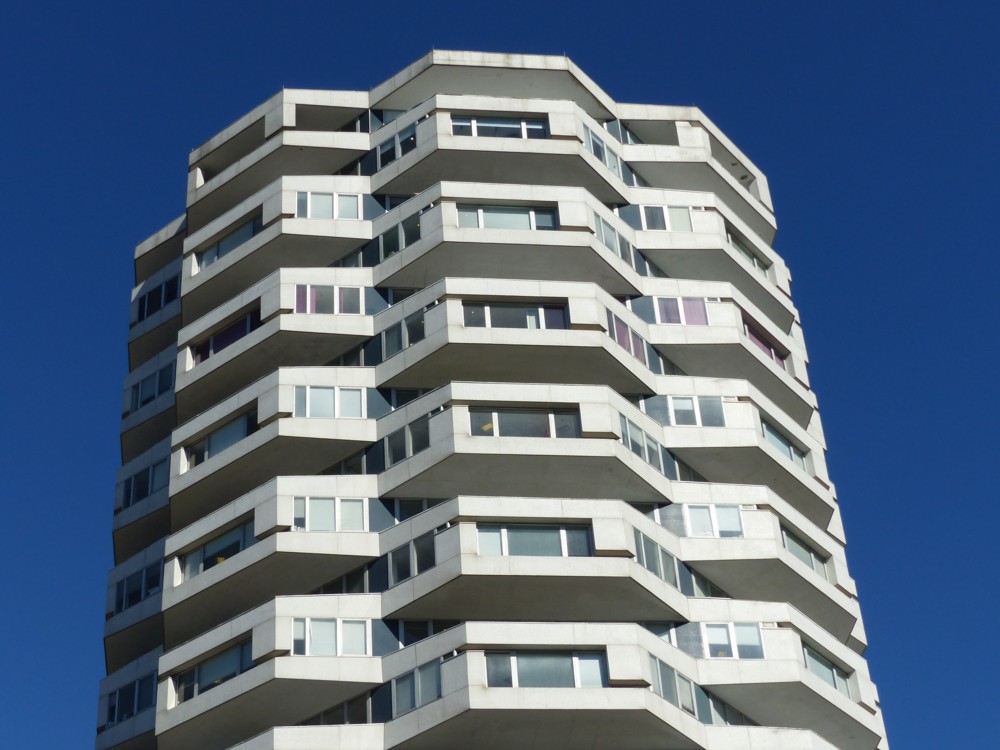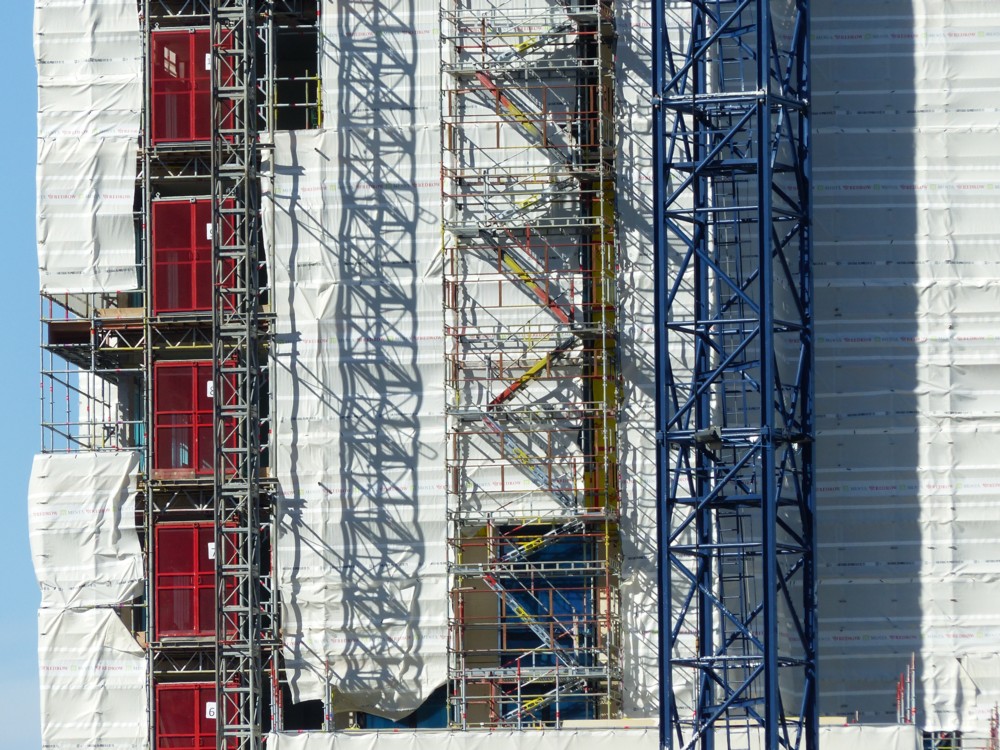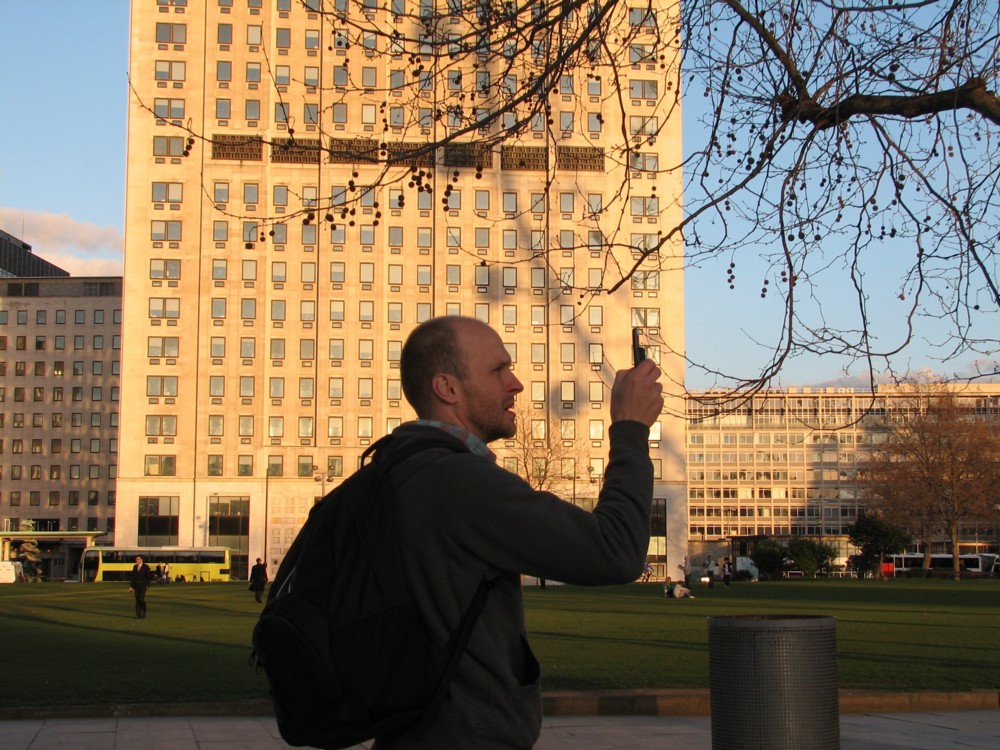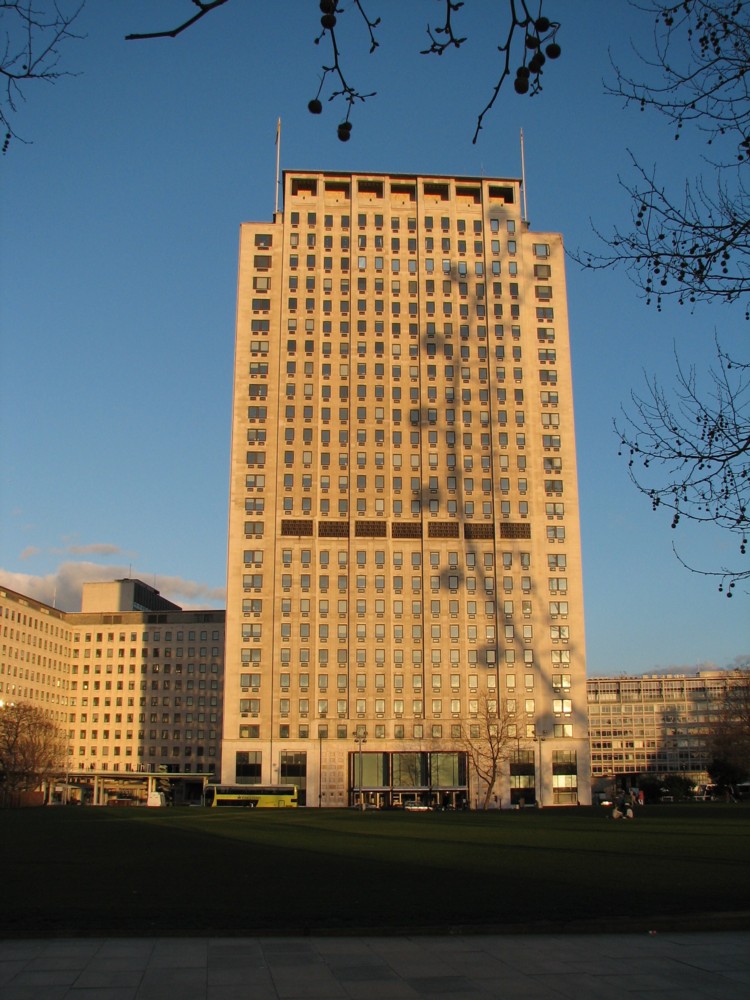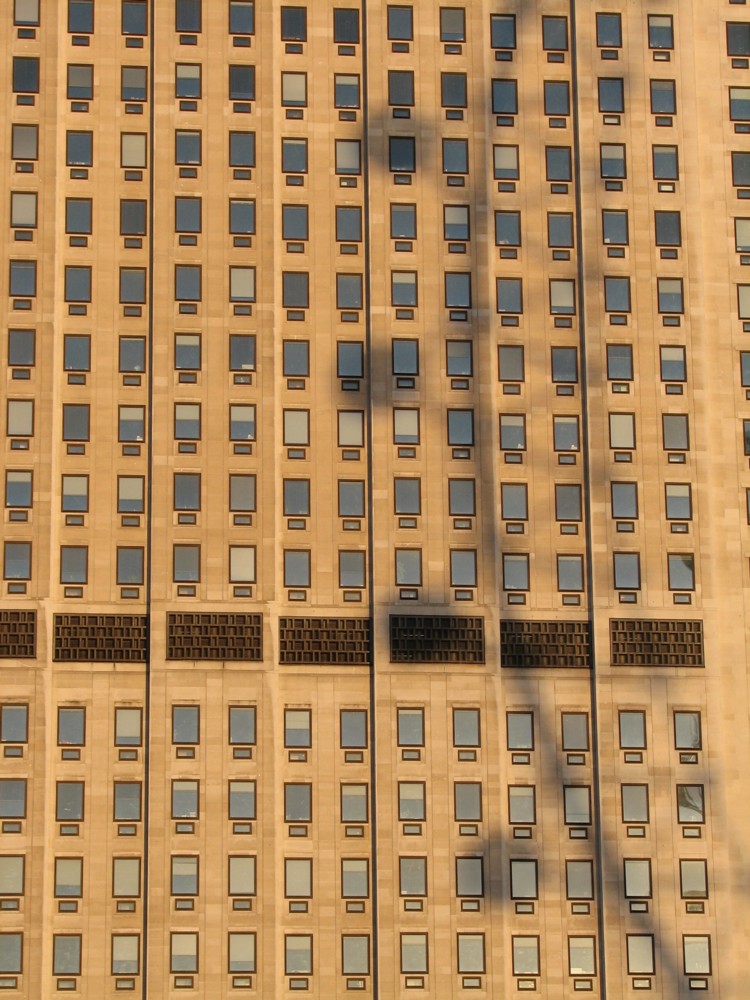August 18th 2017 was one of those bright-light-on-light-coloured-buildings-turning-the-sky-darkest-blue sort of a day:
But when I photoed that particular photo, in Oxford Street, the mere bright-lightedness of the buildings or the darkness of the dark blue sky were not what I was focussing on, or at any rate trying to focus on. I know this, because the very next photo I photoed was this:
What I was interested in was that shadow. And it just has to be a beaver, doesn’t it? No other creature has quite that granny-bod shape. (The shadow is clearly not of that bobble on the right, as, with my terrible eyesight, I may have been guessing at the time.)
Sadly, however, I didn’t manage to get a look at or to photo a photo of the original beaver statue that was the cause of this shadow. I think I must have been too close to the building. Or, I tried to but not hard enough, and then forgot the beaver and looked at all the other things to be seen from Oxford Street that this same light was lighting up. Yes, probably that.
But then, earlier this week, while wandering through the archives, and spotting this beaver shadow as an obvious solution to the what-to-blog-on-Friday question which I face every Friday, it occurred to my slowing old brain that I didn’t just have a mysterious photo of a beaver shadow to ponder about and never explain. I also had a word – “beaver” – and that once you have a word, the internet becomes searchable, even if all you really have is an image and a guess about a word. So, “beaver oxford street”, and bingo, all was explained, instantly.
Why Are There Statues of Beavers On Top Of This Oxford Street Shop? asked Londonist, 32 months ago. Question asked, question answered:
If you glance up at the top of 105 to 109 Oxford Street (the building currently home to Tiger and Footlocker), you’ll see a strange quartet of creatures decorating the roof.
Four beavers, the top one holding a scroll(!), have been peering down on Oxford Street shoppers for 130 years.
Ah, I should have glanced. Then, I’d have seen them, or at least one of them. All I did was look, and then give up.
This is because 105 to 109 Oxford Street used to be Henry Heath’s Hat Factory and for many years, the hats made here were felted with beaver fur.
Londonist goes on to note that there is a big sign round the back of this building saying “HAT FACTORY” “HENRY HEATH Oxford Street”, and proves this with a photo. I recall taking a photo of this signage, several times. But where, in my ever more voluminous photo-archives, are such photos to be found? Search me. And I could search my V P-As, but it would take far too long.
One of the rules of blogging that I have had to learn is that if I have something to say, and want to say more but can’t, I should just say what I have to say, and leave the rest for later or never. So, the beaver shadow photos go up here, today, and any photos I have photoed of signs saying HENRY HEATH HAT FACTORY will just have to wait for another day or decade, in the event that one fine day or dark night I stumble upon them while looking for something else.
However, I do have just one more beaver photo to show you.
I occasionally visit John Lewis in Oxford Street, because it sells fine produce. Whenever I do this, I also, unless the weather is particularly bad, visit the very fine John Lewis Roof Garden, and take photos from it of the rest of London. So, I wondered if I had any photos taken from that spot, of any beavers, photoed in the direction of Centre Point, which is the big tower at the eastern end of Oxford Street, after which Oxford Street turns into New Oxford Street. Since I knew which directories to be looking in, this was a photo-archival search that made sense.
And, long story a bit less long, I came upon this photo (which I photoed in 2015):
And I took a closer-up look at this photo, in the spot where a beaver might be seen. And here, in the middle of the above photo, is that beaver, looking like a granny supporting herself with her umbrella (although this is really a “scroll(!)”):
Now clearly, even more than is the case with all the other photos of mine that I show here, this photo is no work of art. Canaletto can rest easy in his grave. But, as with so many of my photos, it’s the principle of the thing. This photo is photoable well, because look, I actually did photo it, badly.
I could even go back to this same spot and trying to photo the same photo, better.
Memo to self: do that, some time soon.

